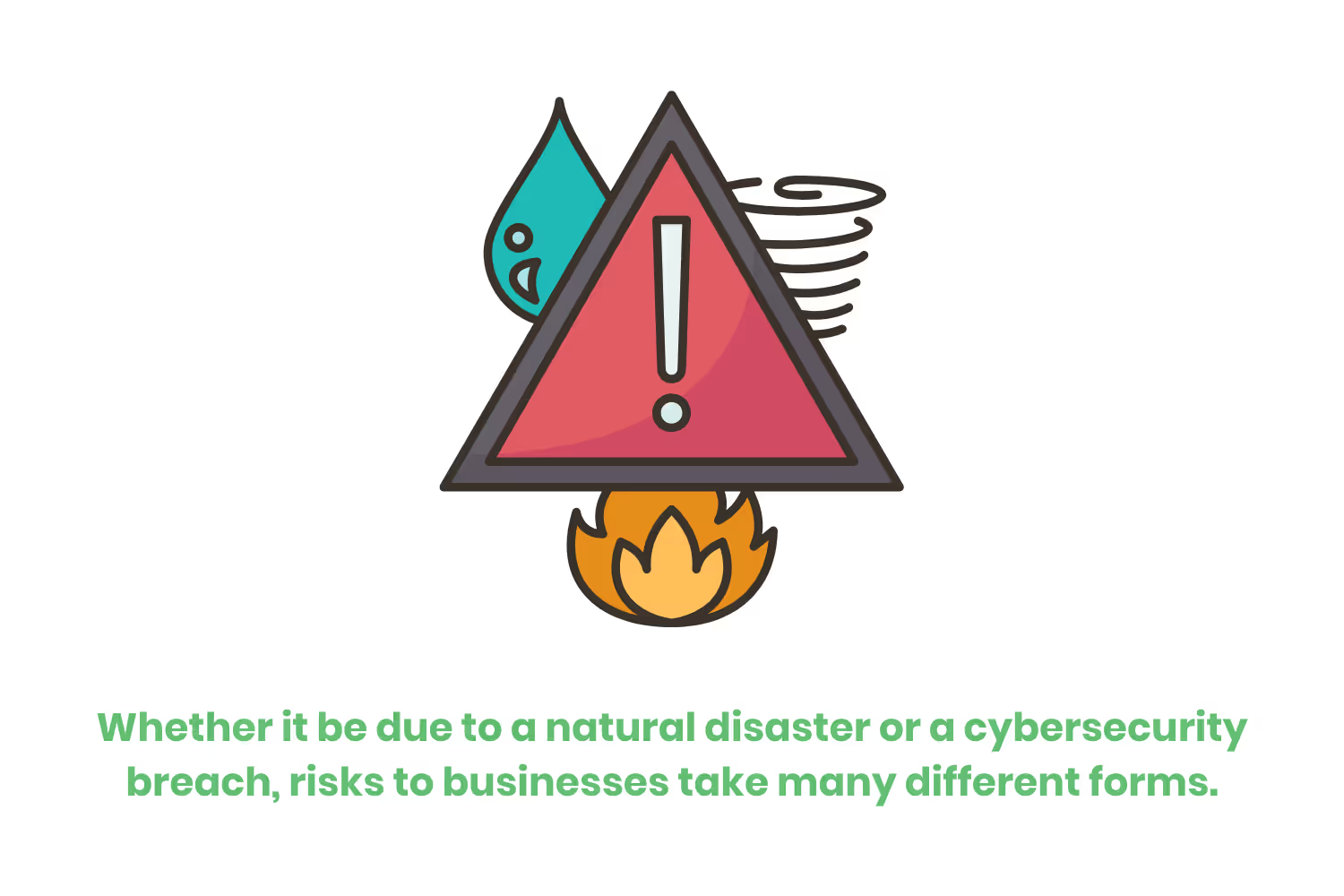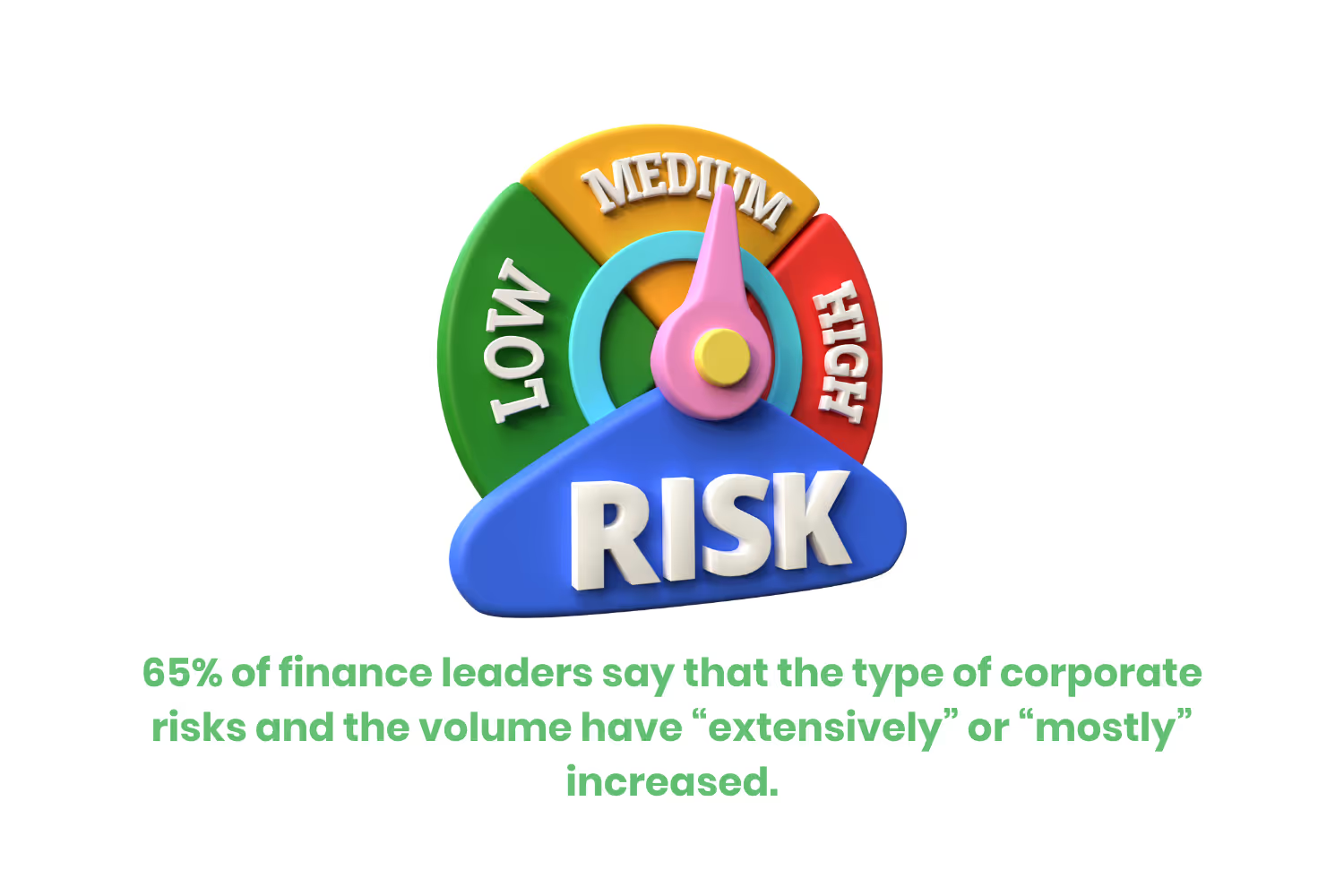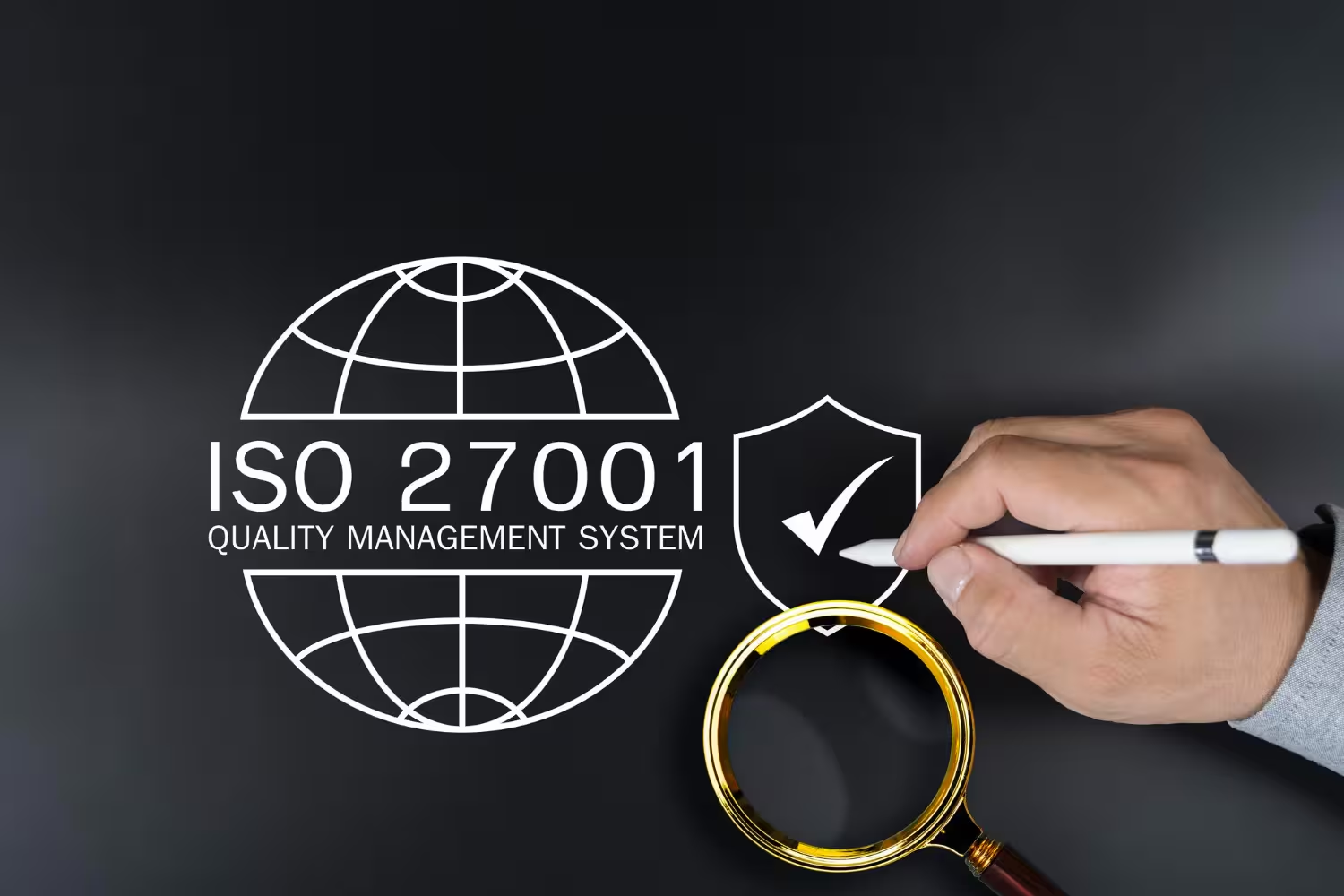Strategies in Risk Management: An Ultimate Guide
In this blog post we cover specifics of what risk management is. As well as strategies that can help keep your institution safe, and who exactly needs to abide by them.

41% of companies said they experienced three or more critical risk events in 2022.
For reference, a critical risk event is any disruption to an organization's operations. Also, any disruption to company safety, or security. With risk event rates currently so high, it’s important to have a strong approach to risk management.

We know that business environments are dynamic, to say the least. And this is especially true when it comes to elements of risk and analysis. Whether it be due to a natural disaster or a cybersecurity breach, risks to businesses take many different forms. They can also affect organizations in all kinds of ways. Regardless of the type of risk or the industry, all organizations need solid risk management strategies.
Today, let’s get into the specifics of what risk management is. As well as strategies that can help keep your institution safe, and who exactly needs to abide by them.
What is Risk Management?
Risk management refers to how quickly and effectively companies identify and mitigate risks. These risks are detrimental to their organization’s infrastructure.
Depending on how robust and seasoned your risk management team and strategies are, will determine how well your organization will recover and rebuild after a security incident. Shaping your organization’s risk management process includes attending to security control selection and assessment, as well as contingency planning.
Don’t forget system authorization decisions, as well!

Companies must focus on these three main areas when discussing strategy and responding to risk:
- Identifying
- Mitigating
- Monitoring
Consider these when breaking down your risk management strategies. It will help you stay on target while considering your organization’s security goals and needs. Let’s take a look at some of the most recent risk management statistics to help emphasize the importance of preparedness.
Risk Management Statistics

- 65% of finance leaders say that the type of corporate risks and the volume have “extensively” or “mostly” increased.
- Approximately 35% of risk analysts say that compliance and regulatory risk present the greatest threat. This is in direct correlation with the company’s ability to drive growth. Another 35% say that the greatest risk comes from cybersecurity breaches or information leaks.
- Data protection and privacy regulations are the largest priorities according to 61% of risk executives in 2022.
- According to 58% of risk executives, cybercrime is consistently in the top five risks to an organization.
- Concerning CROs, the top three risks are direct financial impact, harm to customers, and damage to reputation. Each of these ranks at approximately 30% of the responding CROs.
- 58% of risk analysts report that having poor data is of the greatest concern to an organization.
- Almost two-thirds of business leaders think that their risk management process provides no/minimal advantage (in a competitive sense).
- PwC reports fewer risk executives reporting lower compliance costs (30%) and personnel costs (25%).
- Risk professionals mentioned these keys for improving the relevance of strategic decisions:
- Upskilling of risk workforce on emerging technologies at 47%.
- Leadership support for collaboration across the CEO, the board, and senior leadership at 45%.
- More organized data infrastructure and governance at 38%.
- More budget 37%.
- Almost 75% of organizations say that they have an incident response plan. 63% of those organizations say they regularly test their plan.
- Organizations saved on average 2.66 million USD in breach costs with an IR team and an IR-tested plan. In comparison to organizations that did not have an IR-tested plan, the organizations that saved money experienced 58% cost savings.
- Nearly 75% of business executives think there will be large changes in their approach to business continuity and crisis management in the future.
- Third-party risks and other operational risks, according to 31% of risk executives, prove the greatest threat to an organization’s ability to grow.
- Third-party risk management, according to 64% of organizations, is an organizational strategic imperative. Viewed via their boards of directors as well as their executive teams.

Risk Management Strategies
When we talk about risk management strategies, we are talking about how an organization intends to do the following: identify, assess, respond to and monitor risks.
From this, we now get into the specifics of ideas such as policies and procedures. Different methodologies for performing your risk assessments.
Consider the following when mapping your risk management strategy and monitoring activities:
- Any stakeholder information, such as concerns and priorities.
- Your organization's policies and rules.
- Any financial resources.
- Any legacy investments.
- Your organization’s overall culture and long-term goals.
- Risk tolerance.
- How your organization documents and communicates risks.
- How risks and objectives are continuously monitored.

What strategies should your organization enforce to ensure a strong risk management plan?
Let’s look over these five basic techniques of risk management:
- Avoidance: Mitigating risk by not participating in any activities that might harm you or your organization.
- Retention: The acknowledgment that certain risks are unavoidable. Oftentimes, accepting a small risk is more beneficial for an organization in the long run to avoid larger risks down the road.
- Spreading: Spread the risk of loss. This can happen through multiple people or properties. Duplication of records offers inherent protection in that documents are now housed in multiple safe locations.
- Loss Prevention and Reduction: Aims to minimize the loss. This is rather than eliminating it. Keeps the loss/risk contained and prevents it from spreading to other areas.
- Transfer: Often associated with healthcare and insurance policies. The cost of the care transfers from the provider to the third-person insurance policy. Financial risks then belong to an insurance provider, for a premium fee.
Essential Tools in Risk Management
When planning and developing your risk management plan, be sure to include risk identification and assessment. Utilizing specific tools will make this step easier for you. The planning of all department and unit programs/activities must meet the same standard of risk assessment.

Here are the following steps to ensure your IR team covers all of the bases:
- Make sure to identify any tasks or goals that have to do with the program.
- With every goal and task, identify any possible hazards. If you can’t identify risks in the first place, how do you expect to manage them?
- Go over risk management techniques and select what works best for you. There are no rigid set guidelines when it comes to this, base the structure on what your company needs. Make sure to keep in mind to always aim to reduce the severity of losses if something does go wrong. Don’t be afraid to continue to adjust your techniques as needed!
- Assess any risks associated with your program.
- Based on your risk assessment, you can determine whether there needs to be further modification. Or if you need to incorporate supplementary procedures.
- Decide who will implement these risk management techniques. Then monitor the results. There should be a timetable set for all tasks to ensure their prompt completion.
- Use “frequency” and “severity” to measure the risks that remain after implementing techniques and strategies.
Conclusion
Being able to effectively manage risk levels within a business has always been a priority for executives everywhere. However, as time continues to pass and our environment evolves, the need for impenetrable controls rises. To be able to properly identify a risk is just the beginning of fortifying your professional reputation. Doing so helps reduce missteps, saves you money, time, and resources. It also helps identify who on your team is responsible for what. This promotes a more streamlined approach when engaging with your incident response plan.
Having an appropriate risk managing strategy is useful in all industries. Whether you are in healthcare, cybersecurity, etc. Fully understanding the risks your business faces everyday will help you choose the appropriate strategies. Take a look at your company’s current strategies. How is risk currently handled? Are there any areas where there may be room for improvement? Taking into consideration where you want to be as opposed to focusing on where you currently are is a great place to start.
Emphasize your product's unique features or benefits to differentiate it from competitors
In nec dictum adipiscing pharetra enim etiam scelerisque dolor purus ipsum egestas cursus vulputate arcu egestas ut eu sed mollis consectetur mattis pharetra curabitur et maecenas in mattis fames consectetur ipsum quis risus mauris aliquam ornare nisl purus at ipsum nulla accumsan consectetur vestibulum suspendisse aliquam condimentum scelerisque lacinia pellentesque vestibulum condimentum turpis ligula pharetra dictum sapien facilisis sapien at sagittis et cursus congue.
- Pharetra curabitur et maecenas in mattis fames consectetur ipsum quis risus.
- Justo urna nisi auctor consequat consectetur dolor lectus blandit.
- Eget egestas volutpat lacinia vestibulum vitae mattis hendrerit.
- Ornare elit odio tellus orci bibendum dictum id sem congue enim amet diam.
Incorporate statistics or specific numbers to highlight the effectiveness or popularity of your offering
Convallis pellentesque ullamcorper sapien sed tristique fermentum proin amet quam tincidunt feugiat vitae neque quisque odio ut pellentesque ac mauris eget lectus. Pretium arcu turpis lacus sapien sit at eu sapien duis magna nunc nibh nam non ut nibh ultrices ultrices elementum egestas enim nisl sed cursus pellentesque sit dignissim enim euismod sit et convallis sed pelis viverra quam at nisl sit pharetra enim nisl nec vestibulum posuere in volutpat sed blandit neque risus.

Use time-sensitive language to encourage immediate action, such as "Limited Time Offer
Feugiat vitae neque quisque odio ut pellentesque ac mauris eget lectus. Pretium arcu turpis lacus sapien sit at eu sapien duis magna nunc nibh nam non ut nibh ultrices ultrices elementum egestas enim nisl sed cursus pellentesque sit dignissim enim euismod sit et convallis sed pelis viverra quam at nisl sit pharetra enim nisl nec vestibulum posuere in volutpat sed blandit neque risus.
- Pharetra curabitur et maecenas in mattis fames consectetur ipsum quis risus.
- Justo urna nisi auctor consequat consectetur dolor lectus blandit.
- Eget egestas volutpat lacinia vestibulum vitae mattis hendrerit.
- Ornare elit odio tellus orci bibendum dictum id sem congue enim amet diam.
Address customer pain points directly by showing how your product solves their problems
Feugiat vitae neque quisque odio ut pellentesque ac mauris eget lectus. Pretium arcu turpis lacus sapien sit at eu sapien duis magna nunc nibh nam non ut nibh ultrices ultrices elementum egestas enim nisl sed cursus pellentesque sit dignissim enim euismod sit et convallis sed pelis viverra quam at nisl sit pharetra enim nisl nec vestibulum posuere in volutpat sed blandit neque risus.
Vel etiam vel amet aenean eget in habitasse nunc duis tellus sem turpis risus aliquam ac volutpat tellus eu faucibus ullamcorper.
Tailor titles to your ideal customer segment using phrases like "Designed for Busy Professionals
Sed pretium id nibh id sit felis vitae volutpat volutpat adipiscing at sodales neque lectus mi phasellus commodo at elit suspendisse ornare faucibus lectus purus viverra in nec aliquet commodo et sed sed nisi tempor mi pellentesque arcu viverra pretium duis enim vulputate dignissim etiam ultrices vitae neque urna proin nibh diam turpis augue lacus.




